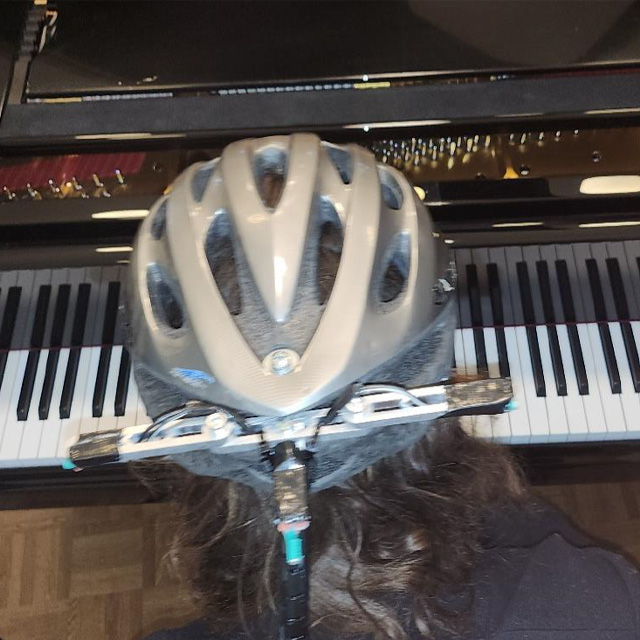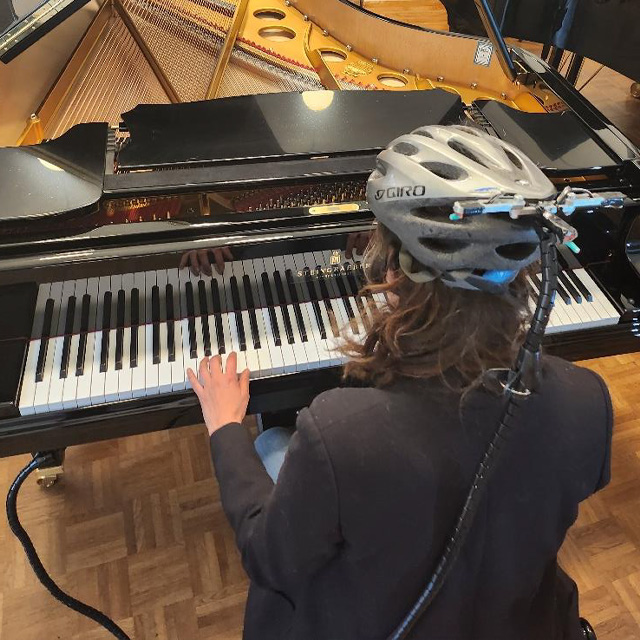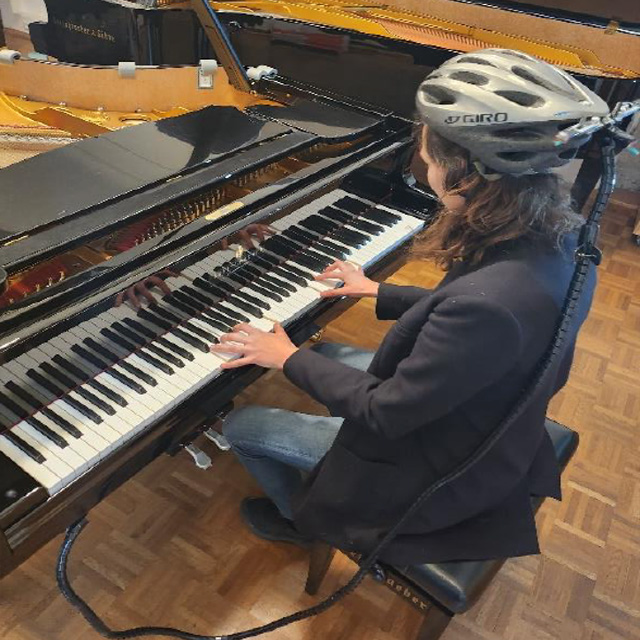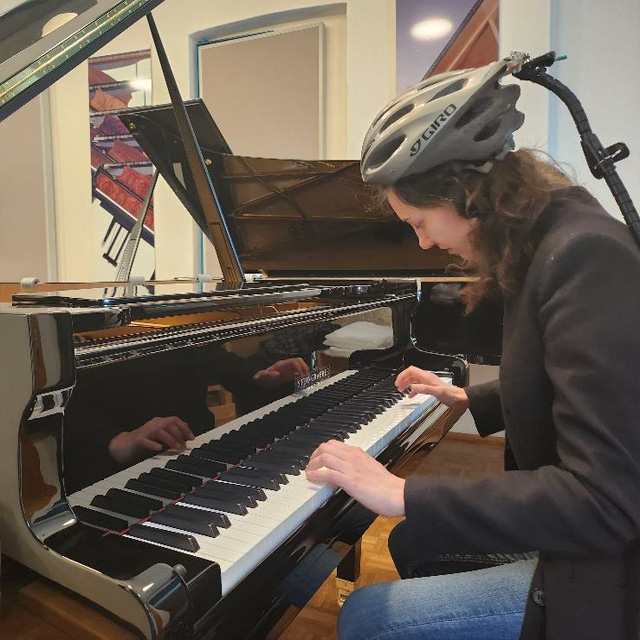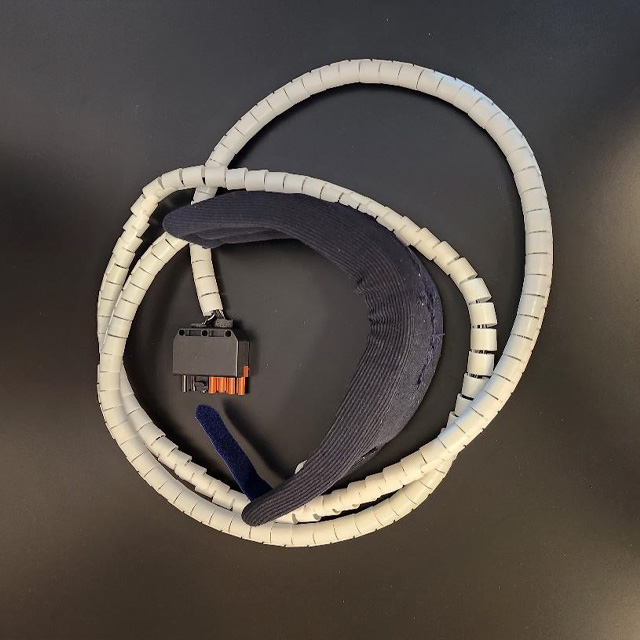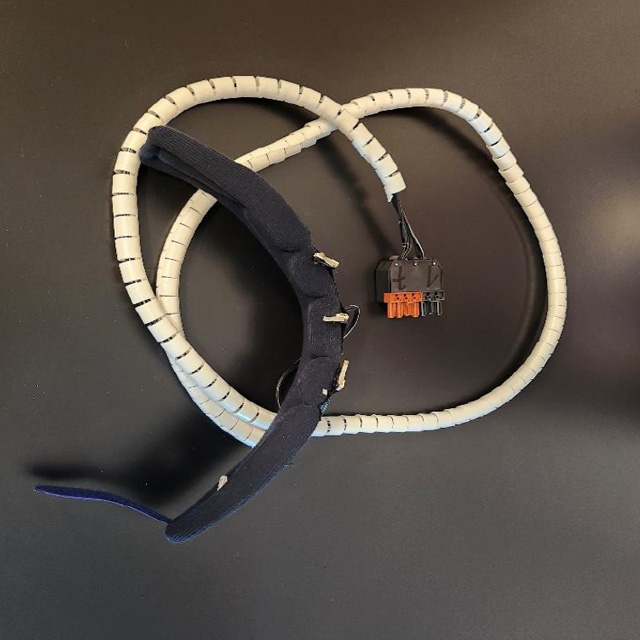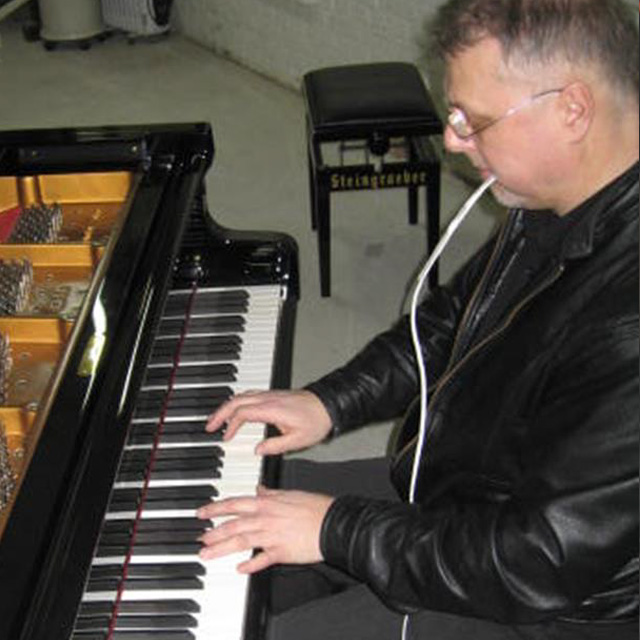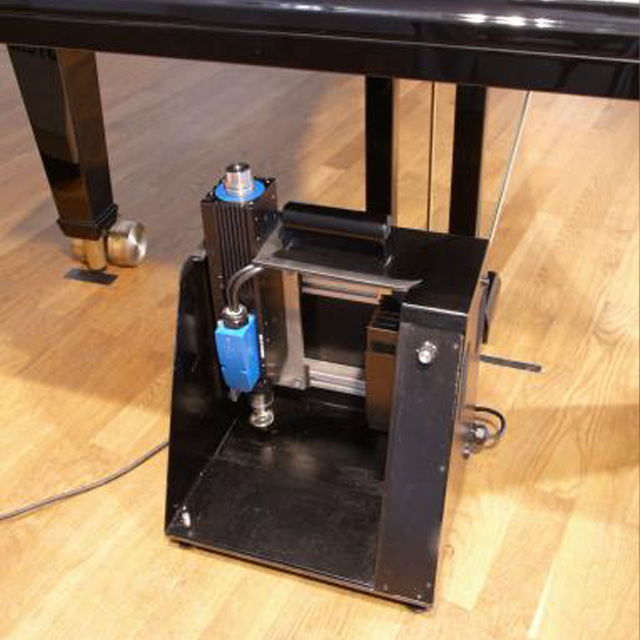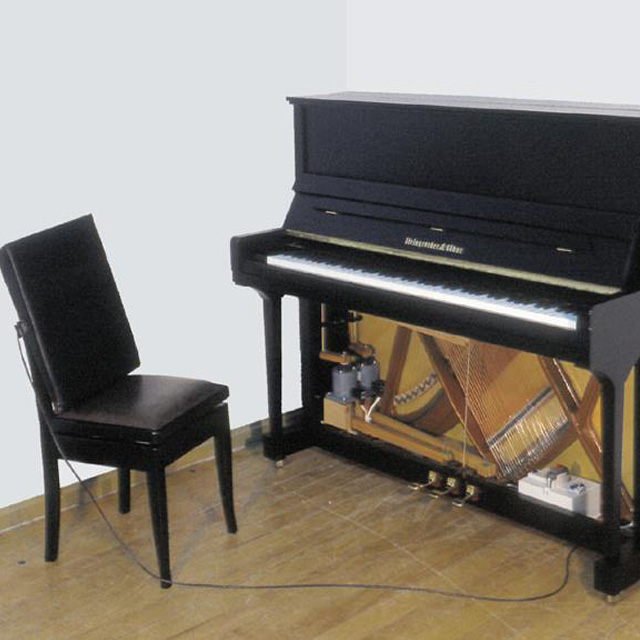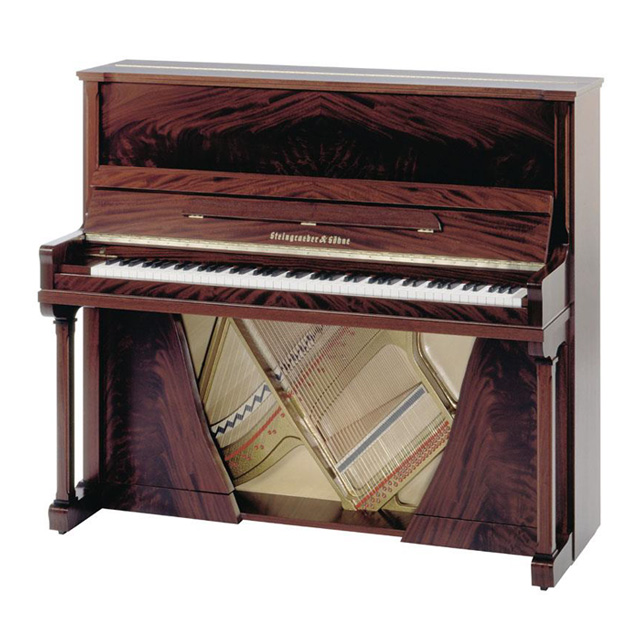Steingraeber pedal systems for wheelchair users
Options and their advantages
Steingraeber has developed different systems for wheelchair usage, each of which is adapted to individual needs. There are three options with electromagnetic controls – a bicycle helmet with three inclination sensors, a neck bracelet with three Reed switches (ferromagnetic circuit switch) or traditional switches. Magnets are integrated into the pedal system and the motor options are adapted to the piano player. The other solution is an actuator control, that we developed together with Prof. Rupp from the University of Heidelberg. Here a mouth control reacts even more sensitively and enables a large number of intermediate stages.
Steingraeber developed different systems which are adapted to the individual requirements.
1. Electro-magnetic control by solenoids
Magnets are integrated into the pedal system and built into the interior of the upright piano or grand piano. The operation is adapted to the motor capabilities of the piano player, i.e., the switches are suitably integrated.















